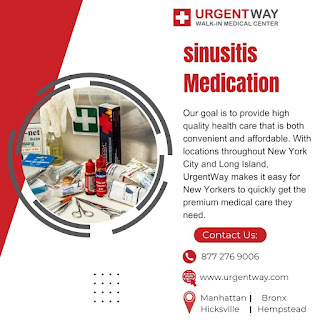Low Back pain-acute:
Low Back pain-acute:
Acute lower Back pain is one of the numerous reasons that aged women visit their family Doctor . Most cases recover snappily with minimum treatment, especially when some glowing should prompt aggressive treatment. Significant red flags include significant age-related trauma ( eg ,expansive or progressive. Although there are numerous treatments for acute low Back pain, Most have little efficacity. Physical therapist-guided exercises and McKenzie's spinal stabilization exercises, may have intermittent pain and need for medical services, oral steroids, acupuncture, massage, stretching, lumbar support, or regular exercise;
Low Back pain refers to pain that you feel in your lower back. You may also have back stiffness, dropped movement of the lower Back, and difficulty standing straight. Acute back pain can last for many days to many weeks.
Causes:
Most people to witness back pain at least formerly in their lives. Although this pain or discomfort can do anywhere in your Back, the most common area is your lower Back. This is because your lower back carries the Most of your body weight.
Low Back pain is the number two reason Americans see their healthcare provider. It's alternate only to snap and flu.
You generally first feel pain after lifting a heavy object, moving suddenly, sitting in one position for a long time, or right after an injury or accident.
Acute downward back pain is most frequently caused by an unforeseen injury to the muscles and ligaments that support the Back. Pain can be caused by muscle spasms or strains or gashes in muscles and ligaments.
Causes of unforeseen low Back pain include:
- Vertebral contraction fractures
from osteoporosis
- Cancer related to the
chine
- Fracture of the vertebral bone
- Muscle spasms( overstretched
muscles)
- A ruptured or herniated
slice
- Sciatica
- Spinal stenosis( narrowing of
the spinal conduit)
- Angles of the chine(
similar as scoliosis or kyphosis) that may be inherited and seen in
children or adolescents
- Strains or gashes the muscles
or ligaments that support the back
- Low Back pain can also be due to:
Abdominal aortic aneurysm leakage.
- Arthritic conditions are
similar to osteoarthritis, psoriatic arthritis, and rheumatoid
arthritis.
- Infection of the chine (
osteomyelitis , discitis, abscess).
- Kidney infection or kidney
stones.
- Problems related to pregnancy.
- Problems with the gallbladder
or pancreas can cause back pain.
- Medical conditions that affect
the female reproductive organs, including endometriosis, ovarian cysts,
ovarian cancer, or uterine fibroids.
- Pain in the back of your pelvis or sacroiliac (SI) joint.
The exact cause and origin of acute low Back pain:
Unlike habitual Back pain, in Most people with acute Back pain it's generally insolvable to determine the exact cause, that is, to make a pathology diagnosis. Pain can be caused by numerous known and unknown structural and functional abnormalities. or complaint processes; Pain inflexibility and associated disability also depend on multiple factors, including pain processing mechanisms, biopsychosocial factors, and patient comorbidities.
There are three main groups of acute Back pain.
- Acute Non-specific low Back
pain( 90- 95 of cases in primary care)
- Lumbar motor birth- an opinion
of rejection
- Radicular pattern( 5- 10 of
cases in PHC)
- Radicular pain,
radiculopathy
- Serious pathology
- Serious pathology* (<1% of
primary care cases)
- Vertebral or sacral fractures,
primary tumors and metastases, spinal infection, axial spondy loarthritis ,
coccygeal syndrome
Serious non-spinal pathology such as back pain may also be present. Abdominal aortic aneurysm (Table 1), pyelonephritis, pancreatitis, or prostatitis.
Management of acute non-specific low back pain:
They involve the patient in the management of
their plan and are told about what has worked or not worked in the past between
health services. Make realistic expectations for patients to achieve a pain
management plan.
They provide practical reassurance , that is,
using facts and logic, reassurance rather than emotion, about the successful
and supportive nature of acute low back pain.
Argument coping strategies, including
distraction techniques, are used to moderate sharp-tongued speeches
Encourage patients to remain physically active,
minimize bed rest, and return to normal work and daily activities as soon as
possible. Note that injuries are not always the cause of pain and that serious
pain is serious when it increases.
Assess the risk of software development
evasion, for example through Star T Back
Prioritize non-pharmacological interventions,
superficial applications of heat and cold, relaxation and distraction
techniques, exercise, and physical therapy.
Pharmacological treatments have limited
evidence of efficacy and are usually reserved for people with severe pain,
although they may initially be required to support patients while they return
to their normal routines and daily activities and non-pharmacological
interventions.
If pain relief is required, try an NSAID (or paracetamol) and prescribe short courses only at the lowest effective dose to avoid long-term drug dependence. Pharmacological treatments should always be used in conjunction with non-pharmacological interventions.
Treatment of Low Back pain-acute:
Many clinical treatment options are available (Table 2). No superior treatment has been demonstrated; Therefore, multimodal therapy is the cornerstone of treatment. Both treatments are based on the best evidence, medical practice, and patient preference.
First-line treatment:
- Surgery
- Education
- Morning work
- Weight loss
- Exercise/physiotherapy
- Nonsteroidal
anti-inflammatory drugs
- Tai
chi/yoga/Pilates
- Paracetamol
Second-line treatment:
- Multidisciplinary
rehabilitation
- Psychological
therapy
- Antidepressants
- Injections - facial/epidural
Third-line treatment:
- Tapentadol
- Surgery.



.png)
Comments
Post a Comment